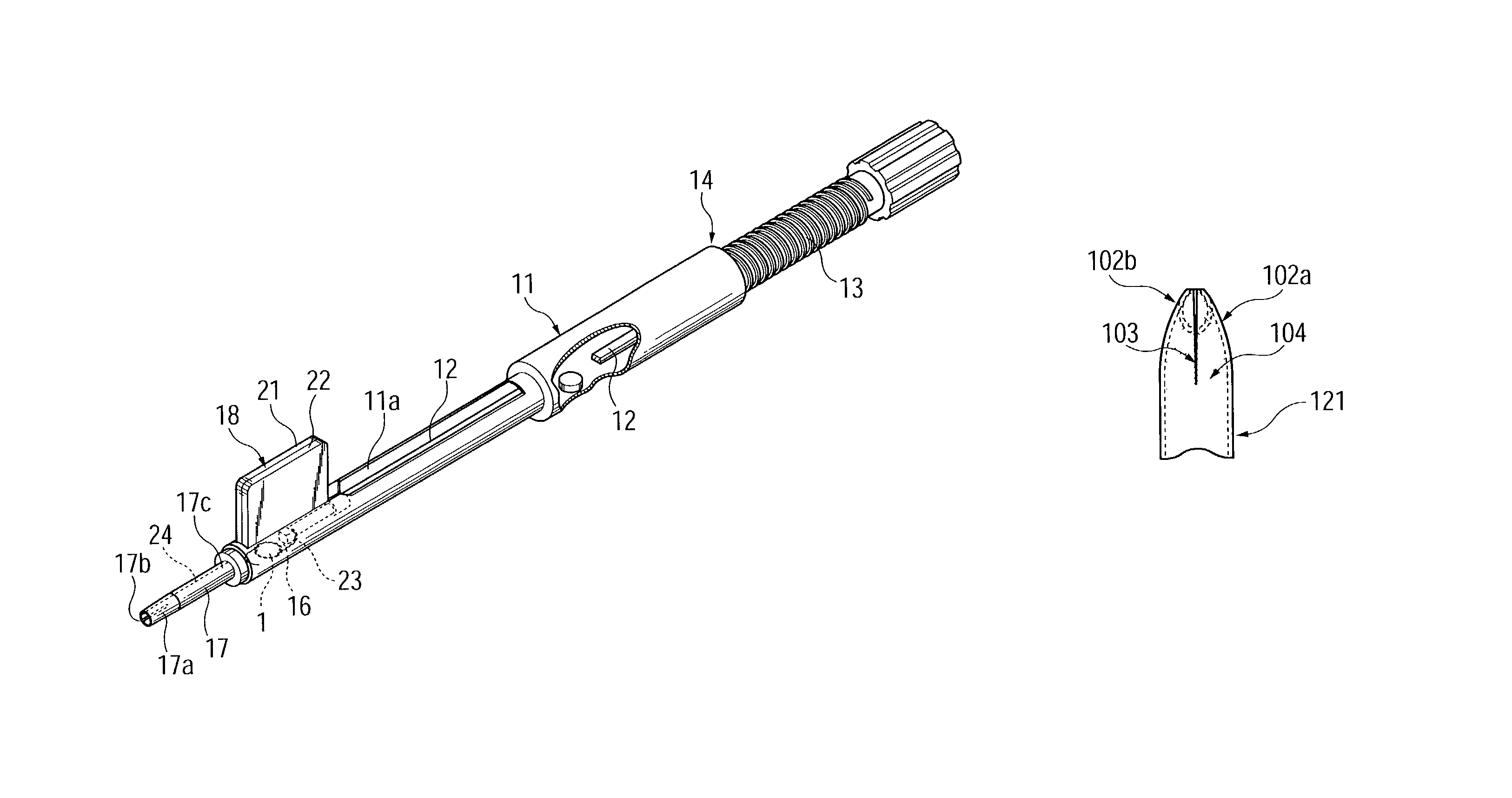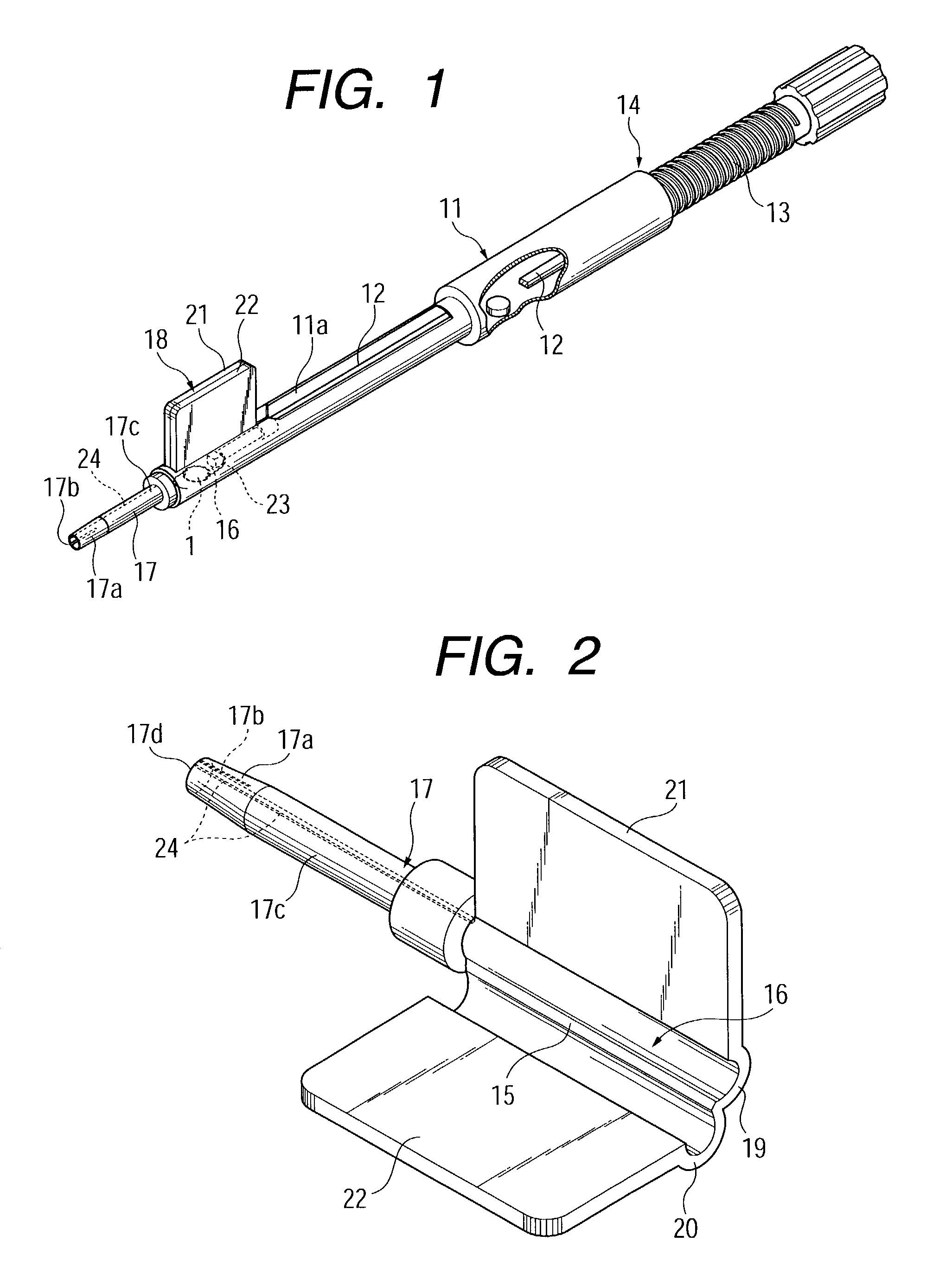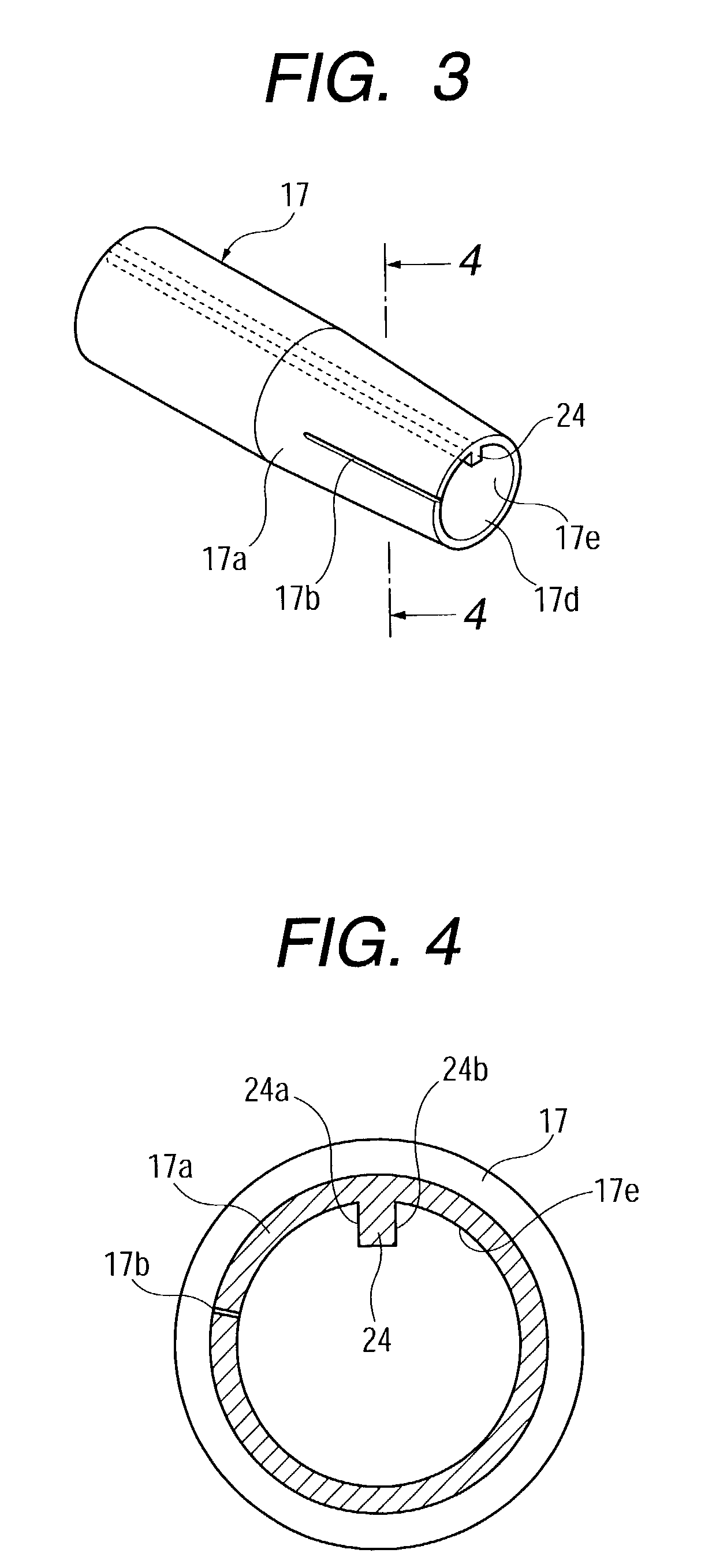Insertion device for deformable intraocular lens
- Summary
- Abstract
- Description
- Claims
- Application Information
AI Technical Summary
Benefits of technology
Problems solved by technology
Method used
Image
Examples
Embodiment Construction
[0052]Embodiments of the present invention will be described with reference to the accompanying drawings.
[0053]First, an intraocular-lens insertion device according to a first embodiment of a first aspect of the present invention will be described.
[0054]FIG. 1 is a perspective view of the intraocular-lens insertion device according to the first embodiment of the first aspect of the present invention.
[0055]The intraocular-lens insertion device includes a generally cylindrical, tubular device body 11; a push rod 12 fitted into the device body 11; a push-out mechanism 14 including a male-thread shaft 13 in screw-engagement with a female thread (not shown) formed on the inner circumferential surface of the device body 11; and an enclosing member 18, which has a lens receiving section 16 having a hinge portion 15, and an insertion tube 17 projecting forward from the lens receiving section 16. An attachment groove 11a is formed in an upper portion of a tip end portion of the device body 1...
PUM
 Login to View More
Login to View More Abstract
Description
Claims
Application Information
 Login to View More
Login to View More - R&D
- Intellectual Property
- Life Sciences
- Materials
- Tech Scout
- Unparalleled Data Quality
- Higher Quality Content
- 60% Fewer Hallucinations
Browse by: Latest US Patents, China's latest patents, Technical Efficacy Thesaurus, Application Domain, Technology Topic, Popular Technical Reports.
© 2025 PatSnap. All rights reserved.Legal|Privacy policy|Modern Slavery Act Transparency Statement|Sitemap|About US| Contact US: help@patsnap.com



